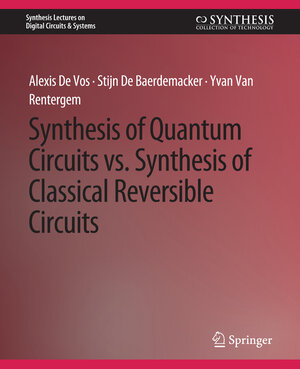
×
![Buchcover ISBN 9783031798955]()
Synthesis of Quantum Circuits vs. Synthesis of Classical Reversible Circuits
von Alexis De Vos, Stijn De Baerdemacker und Yvan Van RentergemAt first sight, quantum computing is completely different from classical computing. Nevertheless, a link is provided by reversible computation.
Whereas an arbitrary quantum circuit, acting on ?? qubits, is described by an ?? × ?? unitary matrix with ??=2??, a reversible classical circuit, acting on ?? bits, is described by a 2?? × 2?? permutation matrix. The permutation matrices are studied in group theory of finite groups (in particular the symmetric group ????); the unitary matrices are discussed in group theory of continuous groups (a. k. a. Lie groups, in particular the unitary group U(??)). Both the synthesis of a reversible logic circuit and the synthesis of a quantum logic circuit take advantage of the decomposition of a matrix: the former of a permutation matrix, the latter of a unitary matrix. In both cases the decomposition is into three matrices. In both cases the decomposition is not unique.


